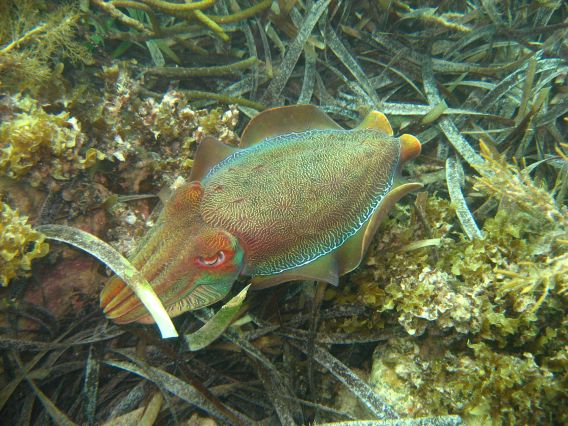https://www.bbc.com/travel/article/20220221-australias-x-rated-underwater-show
Each year, the small South Australian town of Whyalla becomes home to one of the most spectacular underwater events: the spawning of the giant Australian cuttlefish (Sepia apama, grows to 50cm in length).
A type of marine invertebrate closely related to the octopus, cuttlefish are whip-smart molluscs that can change colour and texture instantly. They’ve been known to solve puzzles, and can hypnotise their prey by turning their bodies into strobe lights, rapidly pulsing colour through their skin to distract and stun an unsuspecting crab or fish. Their camouflage skills put chameleons to shame, and have even attracted the attention of the US military, who have researched the colour-changing abilities of cuttlefish with the hopes of replicating their techniques for army use. If that’s not unusual enough, their mating behaviours are strange, to say the least.
From May to September each year, hundreds of thousands of Giant Australian cuttlefish gather in the waters just off Point Lowly, in the Upper Spencer Gulf, for the sole purpose of mating.
The largest cuttlefish in the world are found throughout southern Australian waters, but only in Whyalla do they gather in high numbers for mating. “An estimate of cuttlefish numbers on the breeding aggregation for 2020 was 247,000, the highest on record,” said Professor Bronwyn M Gillanders, a prominent cuttlefish researcher and Head of School, Biological Sciences at the University of Adelaide. “This number is reported but we know that it’s likely an underestimate.”
According to Gillanders, Whyalla attracts cuttlefish due to its unique marine landscape, with the Upper Spencer Gulf offering plenty of rocky ledges that the females use to lay their eggs. While cuttlefish mate elsewhere, the Spencer Gulf is home to the largest–known aggregation on the planet – there’s nowhere else in the world where swimmers can observe such spectacular and strange mating behaviours en masse, including pulsating colour changes and males disguising themselves as females.
No-one ever said finding a partner was easy – and these cuttlefish are single and ready to mingle – but first, these unusual creatures need to get here. Bramley explained that some of the cuttlefish have been tagged, revealing that some are travelling from at least 65km south of the town and others 35km to the north to get to the breeding grounds in the Upper Spencer Gulf.
